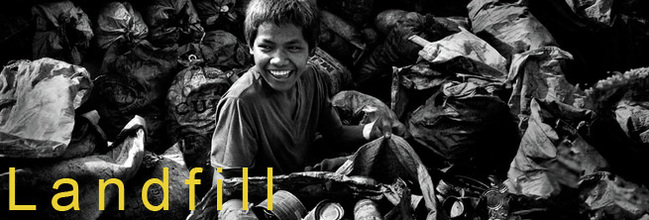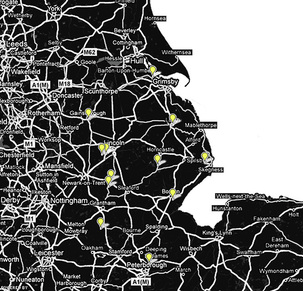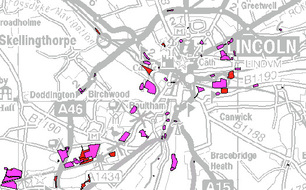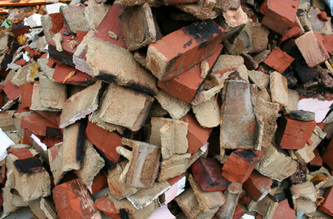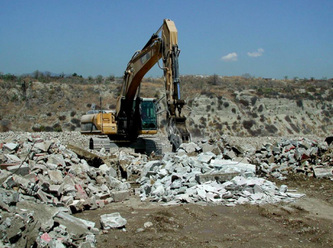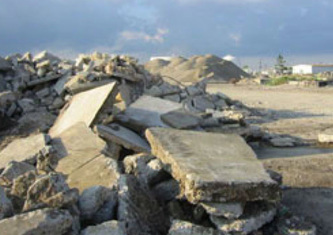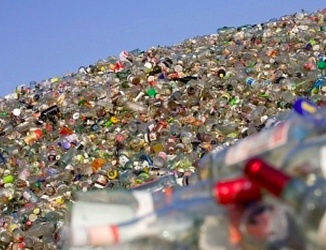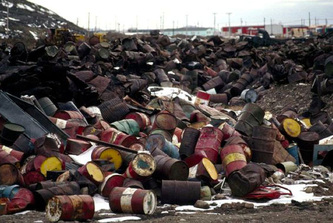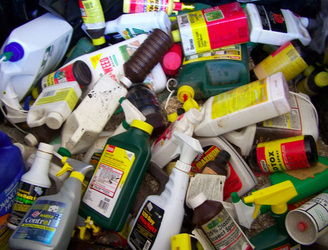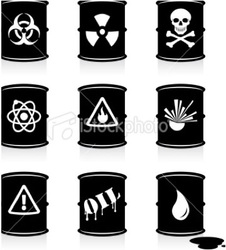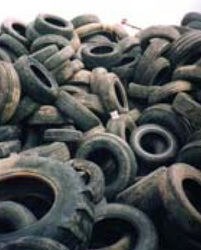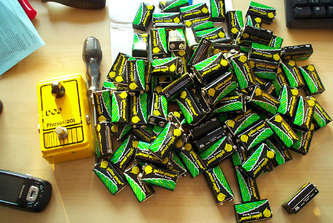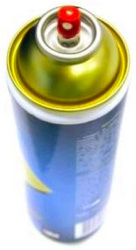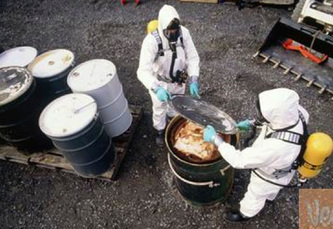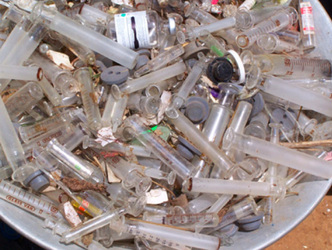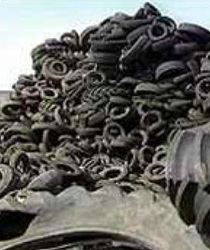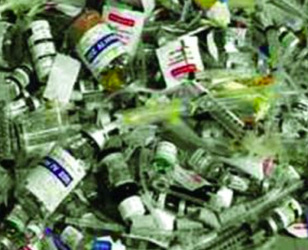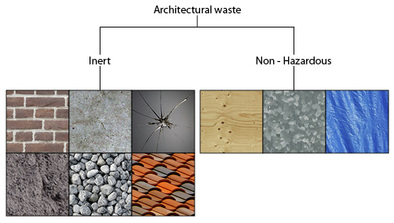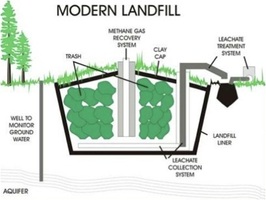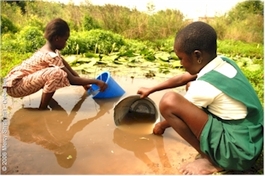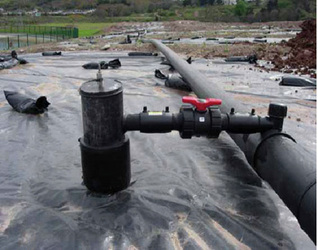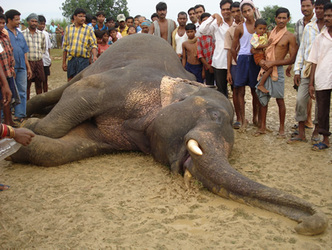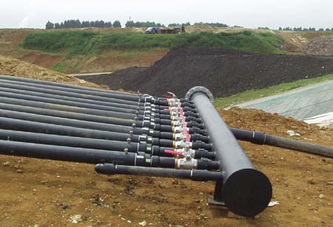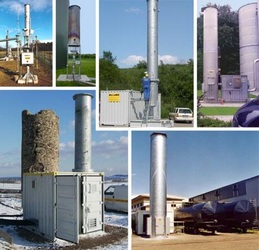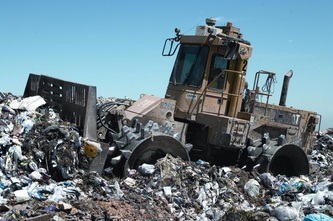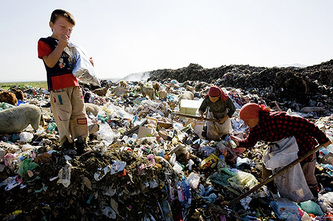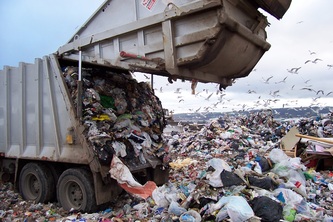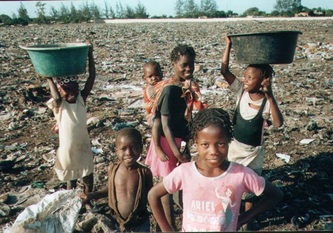- Home
- Project Waste
- Statistics
- What's Wasted
- Why is it Wasted
- Material Lifecycle
- Recycling
- Landfill
- Smart Manufacture
- Design for Disassembly
- Simple Construction
- Avoiding Wasteful Techniques
- Legislation & Policy
- Case Studies
Would you fancy your next home, local pub, child's school or hospital built on a historical landfill site?...
What is Landfill?
Land·fill - An area of land which is built up from deposits of solid refuse in layers covered by soil.
Landfill is the oldest form of waste disposal, it is effectively a large organised rubbish tip.They are managed in different ways depending on the type of waste deposited, the waste is strictly filtered to control what materials are dumped. Some of the waste would be treated, others are safe enough to simply dump unrefined.
Landfill is the oldest form of waste disposal, it is effectively a large organised rubbish tip.They are managed in different ways depending on the type of waste deposited, the waste is strictly filtered to control what materials are dumped. Some of the waste would be treated, others are safe enough to simply dump unrefined.
Locations
Lincolnshire has significantly reduced its additions to its landfill in the past years. There are few active landfill sites left in Lincoln, mostly located on the outskirts.
Take a look at some examples of historical and active landfill sites;Lincolnshire has significantly reduced its additions to its landfill in the past years. There are few active landfill sites left in Lincoln, mostly located on the outskirts.
Take a look at some examples of historical and active landfill sites;Lincolnshire has significantly reduced its additions to its landfill in the past years. There are few active landfill sites left in Lincoln, mostly located on the outskirts.
Active sites
- Quarry
- Specified landfill sites
- Quarry
- Specified landfill sites
Historical sites
- City school
- Quarry
- Prison
- City school
- Quarry
- Prison
So before you fill that skip on your new build or throw that bag of "un-recyclable rubbish" in for rubbish collection, ask yourself this.
Would you fancy your next home, local pub, child's school or hospital built on a historical landfill site?...
Types of landfill
- Inert
- Materials created from naturally occurring raw substances such as clay, stone or glass.
‘Inert Waste’ does not undergo any significant physical, chemical or biological transformations.
Inert waste will not dissolve, burn or otherwise physically or chemically react, bio-degrade or adversely affect other matters with which it comes into contact in a way likely to give rise to environmental pollution or harm human health.
Examples - brick, concrete, glass bottles, earth, stone and ceramics
‘Inert Waste’ does not undergo any significant physical, chemical or biological transformations.
Inert waste will not dissolve, burn or otherwise physically or chemically react, bio-degrade or adversely affect other matters with which it comes into contact in a way likely to give rise to environmental pollution or harm human health.
Examples - brick, concrete, glass bottles, earth, stone and ceramics
- Hazardous
- Materials that are actively reacting and possibly cause damage to the environment
Landfills for hazardous waste can only accept hazardous waste (and a small quantity of inert waste for use as cover and protection i.e landfill lining). Waste is tested to find out the characterisation of the waste, which includes testing and comparing to the limit values of the waste acceptance criteria (WAC), set by the environmental agency. Waste is also rejected to landfill if the hazardous substances are liquid, these need to be solidified otherwise its classed as banned waste.
For example; waste could be hazardous but it might be unacceptable at a landfill for hazardous waste as it contains too much of a hazardous substance.
There is constant development into the strategies of hazardous waste. Research and development is being carried out to improve the facilities and strategies of dealing with hazardous waste in order to protect the environment as much as possible, as well as look for faster and more efficient technology.
Examples - Bottled products still holding harmful chemicals,
- Non-Hazardous
- Materials that are dormant and absent of harmful substances in their current state such as wood, metal or plastic.
Non Hazardous waste is neither classed as inert or special waste, it doesn't need treating or testing, and it does not fall in the hazardous waste classification.
Landfill sites for non-hazardous waste can accept municipal (general household) waste along with non – hazardous wastes (including inert wastes) of any origin.
There are no WAC limits for landfills for non–hazardous waste, therefore these landfill sites don't have any limits as long as the landsite follows the strict guidelines set by the environmental agency.
There are also high-level waste diversion targets laid out in Article 5 of the Landfill Directive.
Examples - Full tyres (not shredded), batteries, phone cases, aerosol cans without harmful/hazardous substances, carpet, textiles, wood and steel.
- Special provisions
- Materials where special precautions and processes are used
Most hazardous wastes exceed limits and regulations of all other waste classes.
An important option for those wanting to send hazardous wastes to landfill is to dispose of stable, non–reactive hazardous wastes. Such waste must go into a separate cell that is not used for the deposit of bio-degradable wastes.
The Environmental agency and the Council’s decision along with the EP regulations set out special provisions. Need to be closely monitored and tested before they enter landfill.
Examples - asbestos, gypsum and other high sulphate bearing wastes, underground storage.
- Banned waste
- You cannot send the following types of waste to landfill types
Liquid wastes - waste which in a landfill would be explosive, corrosive, oxidising, flammable or highly flammable.
Hospital and other clinical wastes - from medical or veterinary establishments which are infectious and seen as a pose of threat to people.
Whole and shredded tyres - apart from tyres used as engineering material, bicycle tyres and tyres with an outside diameter of more than 1,400mm
Landfills for non - hazardous waste must not accept those clinical and related wastes, which are infectious. Such wastes can come from medical or veterinary establishments.
Landfills for non-hazardous can only accept such wastes if they have been treated and display on other hazards.
Examples - Shredded tyres, syringes and medicine bottles
What comes out?
Landfill Technologies: Methane Gas Recovery
The methane gas recovery system allows methane from decaying waste to be gathered and used as a energy source. Which has great benefits for retrieving a source of energy from landfill waste. However there are many drawbacks on using this system.
Impacts of Landfill and Landfill technologies on the environment
- Infrastructure damage
- Damage to access roads by heavy vehicles moving on and off landfill sites
- Possible pollution of the environment and local environment (such as the contamination of groundwater, leakage into soil during landfill usage if not protected properly)
- Scavengers being buried underneath waste piles
- Off gassing methane is generated by decaying organic wastes (methane is a greenhouse gas)
- Disease becomes more of a threat due to scavengers/vermin, particularly from improperly operated landfills. Which is most commonly and unfortunately seen happening in Third World countries that are not that advanced.
Waste Disposal Problems
We tend to think of waste as something we no longer want. When these unwanted items are put into bins they are taken to a landfill site and buried.
Over the years we have become so used to putting our "waste" out for someone else to deal with that we have become a throwaway society. However, there is now a realization that dumping items we no longer want into landfill sites is not a sustainable option, not only because it's environmentally unsound, but also because we are simply running out of holes in the ground. How to dispose of the ever-increasing amount of waste we generate has become a huge problem and we are now under enormous pressure to minimize what goes into landfill.
Click here for further Information
Over the years we have become so used to putting our "waste" out for someone else to deal with that we have become a throwaway society. However, there is now a realization that dumping items we no longer want into landfill sites is not a sustainable option, not only because it's environmentally unsound, but also because we are simply running out of holes in the ground. How to dispose of the ever-increasing amount of waste we generate has become a huge problem and we are now under enormous pressure to minimize what goes into landfill.
Click here for further Information
What Problems do we face in the U.K?
- A lot of people don't realise the amount/amounts of waste going into landfill.
- The process of landfill and waste disposal's effect on the environment.
- The costly process of landfill sites.
- It's not a sustainable option (we can learn from 3rd world countries)
- Space for landfill sites and possible ones are running out and becoming scarce, so therefore enormous pressure is being created to find alternatives.
- More waste is being created in the U.K whereas landfill sites (holes in the ground) are becoming scarce, this adds even more pressure as well as pressure
Learning from the best/worst
It's said that some 3rd world countries are richer than fully developed countries in terms of their community.
They have near zero crime rates, they recycle 99% of the rubbish that is dumped on their doorstep, younger generations actively socialise with elderly generations and small businesses and crafts thrive.
The slums in dharavi are a prime example of this.
Our statement is this;
They have near zero crime rates, they recycle 99% of the rubbish that is dumped on their doorstep, younger generations actively socialise with elderly generations and small businesses and crafts thrive.
The slums in dharavi are a prime example of this.
Our statement is this;
If a slum can recycle and reuse 99% of waste, than why can't we with all our technology and wealth?!
Future concepts
Learning from different countries such as less advanced countries as shown above. The more advanced countries can learn from this, such as re-using materials, this would therefore impact on the amount of waste going into landfills. Benefiting the U.K for example where space for landfill is becoming scarce.
Examples of re-using materials in buildings can be seen here
Examples of re-using materials in buildings can be seen here
